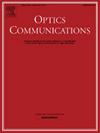Deep-learning based single-shot 3D reconstruction with simulated color-crosstalk and randomized extrinsics
IF 2.2
3区 物理与天体物理
Q2 OPTICS
引用次数: 0
Abstract
In recent years, many single-frame 3D reconstruction schemes based on fringe projection profilometry (FPP) have been proposed. However, most single-frame reconstruction schemes still face the following three issues: (1) obtaining large datasets is very time-consuming, (2) focusing only on achieving single-frame reconstruction for white objects, and (3) requiring fixing the camera-projector positional relationship, increasing operational difficulty. By building a virtual FPP simulation system, our method can quickly render the required datasets, avoiding cumbersome manual operations. When rendering the datasets, we simulate adverse factors such as color channel crosstalk, system extrinsic parameter variations, and object surface colors to guide the training of the neural network. Ultimately, from a single three-frequency color image, the corresponding three-frequency three-step phase-shift images are predicted, achieving single-frame 3D reconstruction of colored objects and allowing some variation in system extrinsic parameters. Real-world experiments demonstrate that the network trained with the diverse data generated by our virtual system has good accuracy, providing valuable guidance for the practical application of deep learning methods.
基于深度学习的单镜头三维重建与模拟色彩串扰和随机外显子
近年来,人们提出了许多基于边缘投影轮廓测量(FPP)的单帧三维重建方案。然而,大多数单帧重建方案仍面临以下三个问题:(1)获取大型数据集非常耗时;(2)仅关注实现白色物体的单帧重建;(3)需要固定相机-投影仪的位置关系,增加了操作难度。通过建立虚拟 FPP 仿真系统,我们的方法可以快速渲染所需的数据集,避免了繁琐的人工操作。在渲染数据集时,我们模拟了色彩通道串扰、系统外在参数变化和物体表面颜色等不利因素,以指导神经网络的训练。最终,通过单幅三频彩色图像,预测出相应的三频三阶相移图像,实现彩色物体的单帧三维重建,并允许系统外在参数有一定的变化。实际实验证明,利用我们的虚拟系统生成的各种数据训练的网络具有良好的准确性,为深度学习方法的实际应用提供了宝贵的指导。
本文章由计算机程序翻译,如有差异,请以英文原文为准。
求助全文
约1分钟内获得全文
求助全文
来源期刊

Optics Communications
物理-光学
CiteScore
5.10
自引率
8.30%
发文量
681
审稿时长
38 days
期刊介绍:
Optics Communications invites original and timely contributions containing new results in various fields of optics and photonics. The journal considers theoretical and experimental research in areas ranging from the fundamental properties of light to technological applications. Topics covered include classical and quantum optics, optical physics and light-matter interactions, lasers, imaging, guided-wave optics and optical information processing. Manuscripts should offer clear evidence of novelty and significance. Papers concentrating on mathematical and computational issues, with limited connection to optics, are not suitable for publication in the Journal. Similarly, small technical advances, or papers concerned only with engineering applications or issues of materials science fall outside the journal scope.
 求助内容:
求助内容: 应助结果提醒方式:
应助结果提醒方式:


